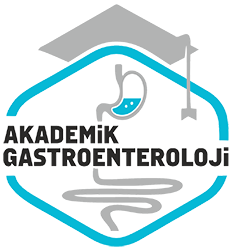Nisan 2014
karaciğer sag lob canlı donör adaylarinda hepatik vasküler anatominin multidedektör bilgisayarli tomografik anjiyografi ile değerlendirilmesi
Evaluation of hepatic vascular anatomy by multidetector computed tomography angiography in living liver right lobe donors
- Ana Sayfa
- Sayılar
- Nisan 2014
- karaciğer sag lob canlı donör adaylarinda hepatik vasküler anatominin multidedektör bilgisayarli tomografik anjiyografi ile değerlendirilmesi ...
Department of 2 Radiology, Agri State Hospital, Agri
Department of 3 Radiology, Aksaray State Hospital, Aksaray
Özet
Giriş ve Amaç:Bu çalışmanın amacı karaciger sag lob canli donör adaylarinda hepatik vasküler anatomiyi ve varyaşyonlari multidedektör bilgisayarli tomografik anjiyografi ile transplantasyon cerrahisi öncesinde görüntülemek ve bu varyaşyonlarin prevalansini saptamaktir. Gereç ve Yöntem:Ellibir olgunun (20 kadın, 31 erkek) görüntüleri değerlendirilmıştır. Olgularin tümünün incelenmesinde 16-dedektörlü multidedektör bilgisayarli tomografi cihazi ve ayni inceleme protokolü (arteryel faz, portal faz ve venöz faz) kullanildi. Alinan ham görüntülerden ‘multiplanar reformat’, ‘maximum intensity projection’ ve ‘volum rendering’ teknikleri kullanilarak iki ve üç boyutlu görüntüler olusturuldu. Bulgular: çalışma grubumuzdaki 51 hastanın 35’inde (%68,6) konvansiyonel arteryel anatomik patern (tip I) ve 16’sinda (%31,4) hepatik arteryel varyaşyon mevcuttu. Çalışmamıza dahil olan 51 hastanın 21’inde (%41,2) portal ven varyaşyonlarina rastlanmis olup 30 hastada (%58,8) normal intrahepatik anatomi izlendi. Ellibir hastanın 43’ünde (%84,3) hepatik venöz varyaşyon mevcutken 8 hastada (%15,7) normal hepatik venöz anatomi saptandi. Sonuç: Hizli bir şekilde volumetrik tarama yapabilme ve ince aksiyel kesitleri kullanarak yüksek kalitede iki ve üç boyutlu görüntüler olusturulabilme özelligi sayesinde multidedektör bilgisayarli tomografik anjiyografi, karaciger sag lob canli donörlerinin hepatik arteriyel, hepatik ve portal venöz sistemlerinin değerlendirilmesinde oldukça faydali bir metoddur.
Abstract
Background and Aims: The purpose of this study was to demonstrate the hepatic vascular anatomy and the variations in living right lobe donors by multidetector computed tomography angiography before the transplantation surgery and to detect the prevalence of these variations. Materials and Methods:Fifty-one potential liver donors (20 females, 31 males) underwent hepatic vascular computed tomography angiography in the arterial, portal and venous phases with a 16-row computed tomography scanner in our clinic. Two- and three-dimensional images were obtained using multiplanar reformat, maximum intensity projection and volume rendering techniques. Results:Thirty-five of the 51 patients (68,6%) had conventional arterial anatomic pattern (type I) and 16 patients (31,4%) had hepatic arterial variations. In 30 patients (58,8%), the portal vein had normal intrahepatic anatomy, while 21 patients (41,2%) had portal vein variations. Eight patients (15,7%) had normal hepatic venous anatomy and 43 patients (84,3%) had hepatic venous variations. Conclusions:Due to the high-speed volumetric scanning and high-quality two- and three-dimensional imaging with the use of thin slices, multidetector computed tomography angiography is a useful method for evaluating hepatic arterial, hepatic and portal venous systems in living liver right lobe donors.



